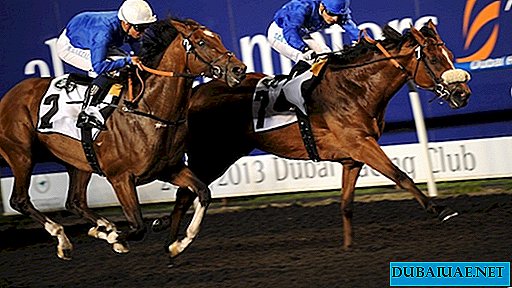BELGIUM - KINGDOM LOCATED IN WESTERN EUROPE AND BOUNDING WITH THE NETHERLANDS, GERMANY, THE GREAT DUCHY OF LUXEMBOURG AND FRANCE, AND ALSO THE NORTHERN SEA. With a total small area of 30,507 square kilometers, Belgium is VARIOUSLY VARIOUS in its relief. In the north stretch the Flemish plains and the coastal strip, covered with dunes, as well as the rocky plateau with its extensive heathers and coniferous forests.
A slightly hilly plateau opens to the north of Sambra and Maas, and to the south of these rivers lies the Arden Upland, where Mount Botrange is located - 694 meters above sea level - the highest point in Belgium. Transport and communication lines in Belgium are well developed: it is a dense network of railways, and meets the modern requirements of the road infrastructure, and a wide-spread system of waterways, which are rivers and their numerous tributaries and canals, contributing to the development of shipping.
Belgium is a constitutional monarchy, consisting of provinces divided into districts and communes. This small country has a great story. At the beginning of our era, this territory was conquered by the Roman strategist Julius Caesar. Scandinavian tribes devastated these lands more than once. Under the Dukes of Burgundy, the country's economic and cultural upsurge began, which lasted until the time of Spanish rule. However, the foundations of the Belgian kingdom were laid only under French rule.
Independence was proclaimed on July 21, 1831, and Leopold of Sax-Coburg, the first king of Belgium, took the oath to his subjects. He did a lot for the economic development of the country and closely monitored the international situation. Since 1993, the throne has been inherited by the King of Belgium, Albert II.
King's house
 Our acquaintance with Belgium began with the capital - the city of Brussels. It was founded around 580 by Saint Jeri, Bishop of Cambrai. According to legend, risking his life, he crossed the forest of Soigny and built a modest chapel on the small island of Senne. A century later, the islet turned into a large settlement, bearing the name "Broxel". Under the Dukes of Burgundy, the city flourished, and Philip the Good turned it into his residence. In the reign of Philip II, the country's government was finally transferred to Brussels.
Our acquaintance with Belgium began with the capital - the city of Brussels. It was founded around 580 by Saint Jeri, Bishop of Cambrai. According to legend, risking his life, he crossed the forest of Soigny and built a modest chapel on the small island of Senne. A century later, the islet turned into a large settlement, bearing the name "Broxel". Under the Dukes of Burgundy, the city flourished, and Philip the Good turned it into his residence. In the reign of Philip II, the country's government was finally transferred to Brussels.
We started our walk around the city with Grand Place (Large Square), which is located in the center of the old city. Above it, directly opposite the King’s House, rises the city hall with its graceful towers, surrounded by ancient houses of the 17th century, where corporations used to be located. There is a flower market here during the day, and in the evening in the radiance of the Grand Place lights it is a magnificent sight. On the square is the Town Hall - the most remarkable monument of architecture of old Brussels and one of the most beautiful works of Gothic architecture in Belgium. Its tower - a true masterpiece of grace and lightness, was built in 1449.
Towering 90 meters, the tower is crowned with a 5-meter weather vane, which depicts St. Michael defeating the dragon.
The King’s house was originally a bread market, and in its architectural design, it resembles a beautiful Gothic crab. Today, the Museum of the Commune of Brussels is housed in the King’s House, in the collection of which there are excellent specimens of faience and porcelain. On the third floor is the famous Minneken Pisa clothing collection, which has about 600 costumes, the oldest of which date from the 18th century. Then we visited one of the oldest cathedrals founded in the 13th century, the Cathedral of St. Michael and St. Gudula. Church art, which made up the greatness of the Middle Ages, is manifested here in its entirety of its splendor and strength. Inside the cathedral is decorated with statues of the twelve apostles. Wooden sculptures depict the expulsion of Adam and Eve from paradise.
An impressive architectural monument of Brussels is the Royal Palace. The pediment is decorated with a bas-relief of T. Vincott.
He depicts Belgium holding the Belgian flag in one hand and a medallion depicting King Leopold II in the other. Currently, it is the official residence of the Belgian monarchs.
 The Palace of Justice is another unique monument and the most grandiose building in Europe; its total area is 2600 square meters. meters. At the corners of the building are four statues symbolizing Justice, Mercy, Power and Law. This work of architect Polarita, opened in 1883, was subjected to fierce criticism and, at the same time, became an object of universal admiration. Belgium Financial Center - The exchange was inaugurated in 1873. Six columns with the Corinthian capital support the pediment, decorated with a bas-relief depicting "Belgium, protecting industry and commerce."
The Palace of Justice is another unique monument and the most grandiose building in Europe; its total area is 2600 square meters. meters. At the corners of the building are four statues symbolizing Justice, Mercy, Power and Law. This work of architect Polarita, opened in 1883, was subjected to fierce criticism and, at the same time, became an object of universal admiration. Belgium Financial Center - The exchange was inaugurated in 1873. Six columns with the Corinthian capital support the pediment, decorated with a bas-relief depicting "Belgium, protecting industry and commerce."
It was interesting to visit the Chinese Pavilion and the Japanese Tower - the pearls of the art of the Far East. They were built specifically for the Paris Exhibition of 1900. The Chinese pavilion exhibits excellent porcelain collections and works of Chinese and Japanese art of the 17th and 18th centuries.
And the museum of clothes and lace contains a collection of robes and richly embroidered church robes of the 17th century, Brussels lace of the 17th and 19th centuries, and secular costume. Also presented here is a collection of documents on the textile industry in the capital and on the dance workshop. It is worth noting that lace production reached considerable size in the 17th century.
Brussels lace is known throughout the world for its beauty and intricate plots. Walking around Brussels, we came to Bannaya Street to the figure of the legendary MennekenPis (Manneken Pis). Legend has it that once a wealthy city dweller lost his only son during festivities. Five days later, he found him on the corner of Bannaya Street, where the little boy was doing what he still does. Today, it so happened that Menneken-Pease, Brussels' most recognizable figure, turned into a hero whose fame spread far beyond Belgium.
Bread Ghent
Our next stop was the old city of Ghent. It began to develop back in the 7th century around two monasteries: St. Bavo and St. Peter. Here is the famous tower, where 44 bells are located, which are famous throughout Belgium. In the center of the city rises the Cathedral of St. Bavo, built in 942 in honor of St. John the Baptist, the first patron saint of the city. Charles V was baptized in this church. Today it is not only a strict and elegant monument of Gothic architecture, but also a real museum that boasts its own collection of sculptures, forged products and paintings. The monastery of St. Peter regularly organizes exhibitions and various cultural events. In the building of the Aleita’s orphanage, there is a museum of folklore, which presents the folk traditions of Ghent, its trade and crafts.
Walking around the city, we went to the pier. In the Middle Ages, the bread marina along with Grassy were the "heart" of the city. Her wonderful buildings were restored at the very beginning of the last century, according to the preserved drawings of that time. The marina is remarkable overlooking the buildings, which still make up the pride of the city. They are reflected in the waters of the Leie River, giving us an idea of the past prosperity and power of corporations.
Diamond dream
 Having enjoyed this beauty of architectural structures, we went to the city of Antwerp on the Esko River. Evangelists landed here in the 7th century with the goal of Christianizing Flanders. The heyday of Antwerp in the 13th century was associated with the development of the textile industry, and trade turned it into one of the richest cities. The well-known printing house “The Officer of Plantinian”, founded by Plantin and Moretus, played an important role in the revival of the city, as well as the appearance of such world-famous artists as Metzis, Rubens, Van Dyck, Jordaens, Tenarm and their students. Thanks to them, Antwerp is becoming the largest center of art. The works of these masters still cause admiration of the whole world. The fame of Antwerp is also the production of diamonds.
Having enjoyed this beauty of architectural structures, we went to the city of Antwerp on the Esko River. Evangelists landed here in the 7th century with the goal of Christianizing Flanders. The heyday of Antwerp in the 13th century was associated with the development of the textile industry, and trade turned it into one of the richest cities. The well-known printing house “The Officer of Plantinian”, founded by Plantin and Moretus, played an important role in the revival of the city, as well as the appearance of such world-famous artists as Metzis, Rubens, Van Dyck, Jordaens, Tenarm and their students. Thanks to them, Antwerp is becoming the largest center of art. The works of these masters still cause admiration of the whole world. The fame of Antwerp is also the production of diamonds.
The patroness of Antwerp is the Virgin Mary. We visited the Cathedral of Our Lady - the main and largest Gothic temple in Belgium. About two centuries it took to build this magnificent structure, sandwiched by rows of houses, because of which only its top peeps. The temple amazes with the beauty of its interior decoration, especially the central nave with six side naves. At the intersection of the south transept is the triptych "Descent from the Cross", at the intersection of the north - the "Decree of the Cross", and in one of the chapels - the Resurrection of Christ. All these are masterpieces by Rubens.
Exquisite stained-glass windows, confessional benches, beautifully carved chairs and an ancient organ are located here. We approached the Green Square, in the center of which is a statue of Rubens. The master looks at his city, as if saying: "Take a look at this city, and you will understand the source of my inspiration." Rubens is buried in the Church of St. James. Above his grave hangs a picture where he is represented in the image of St. George, between two wives: Isabella Brand and Elena Furman.
All tourists visiting Antwerp are sure to be in the quarter adjacent to the station. This is the diamond cutter quarter. Already in the 16th century, Antwerp was famous for its diamonds, the cutting technique of which, depicted by Van Berken, is still used. Antwerp is also known for its seaport, which is the second most important in Europe and the third in the world. Here are the world's largest marine lock and 127 km of loading marinas.
Leaving Antwerp, we looked into the picturesque village of Bornem, located in the bend of the winding Esco River. On its shore we visited an ancient castle. Its beautifully preserved interior gave us the opportunity to dream of a golden past. Here we also saw a collection of American and European cars. The next stop was the abbey, built in 1130. The magnificent alley of three-century lindens leads to the very remarkable gates of the monastery. The abbey currently houses the Da Vinci Museum, which, among other things, houses the painting "The Last Supper", an exact copy of the famous fresco by Leonardo Da Vinci, the size of three square meters.
Lace Brugge
 The pearl and true masterpiece of Belgium is the city of Bruges. For the first time I happened to be here in the winter before Christmas. The impression was so vivid and miraculous that I always wanted to come back here again. Fortunately, this happened. This time it was spring, and my impressions acquired a completely new color of delight and joy.
The pearl and true masterpiece of Belgium is the city of Bruges. For the first time I happened to be here in the winter before Christmas. The impression was so vivid and miraculous that I always wanted to come back here again. Fortunately, this happened. This time it was spring, and my impressions acquired a completely new color of delight and joy.
Today, this city-museum is protected by UNESCO and is the cultural capital of Europe, it is rightly called the "Northern Venice". Bruges is perhaps the only one of the ancient cities of Belgium, which managed to maintain its identity. The appearance of the city is determined by buildings dating back to the XV-XVII centuries. century, many of which were witnesses of its history in the medieval era.
Bruges was once a modest settlement that originated between the 7th and 9th centuries on the banks of the Zvin River. The first inhabitants who settled on this place called it "Brugge".
Subsequently, around the fortress, built by the counts of Flanders and called "Burg", the city grew. Brugge, connected with the sea, has become a major center of trade. Later the city grew so much that the counts of Flanders made it the place of their residence. Already in the XIII century, Bruges became a port of world significance.
The further flourishing of the city is associated with the residence of the Dukes of Burgundy here. Their magnificent courtyard returned to the city its former sophistication and splendor. The city of luxury and art of Bruges knew no equal. Its ancient architecture has become an integral part of European artistic heritage. Back in the 19th century, British tourists began to visit Bruges, attracted by the romantic medieval atmosphere of the city. Currently, Bruges has become a "tourist mecca." It is a city surrounded by greenery with a very special, charming atmosphere.
Acquaintance with Bruges, while walking, is an incomparable pleasure! Our tour began with Hrote Markt, which for centuries has been the most important area of the city. The knights here proved their nobility in tournaments, argued about Flemish fabrics here, and the people fought to defend their freedom. A watch tower rises above the market square and the roofs of the houses - a symbol of the power and freedom-loving aspirations of a medieval city. From the height of the 83-meter tower, a panoramic view of the Flemish plain opens, but to admire it, we overcame 366 steps. Burg can rightfully be called the city acropolis. Here was built the fortress of Count Baudouin I.
Even today, this square is a kind of open-air museum, where nine-century architecture works are on display. It is impossible not to pay attention to the Gothic building of the town hall, replete with subtle and graceful decorative motifs and reminiscent of the outline of the casket of the guardian. To the right of the Town Hall - Crypt St. Basil, Romanesque chapel dedicated to the cult of the Orthodox Greek patriarch. Located above the crypt, the Basilica of the Holy Blood is a three-tiered church in the Romanesque style, dating back to the XII century. Above its entrance stands out the image of a pelican feeding its chicks with its own blood - a symbol of Christ who gave his blood to save mankind. In this chapel, in the golden, jeweled guardian, the relic of the Most Holy Blood rests. According to legend, in 1149 a few drops of Christ's blood were brought to Bruges from Jerusalem by a participant in the Second Crusade, Count Thierry of Alsace. Two small turrets of the chapel seem oriental in style, but in fact they are originally Flemish. Stained-glass windows with figures of princes who once ruled the Spanish, Burgundian and Austrian dynasties here are copies of the 12th century, while the originals of 1483 are stored in the Victoria and Albert Museum of London.
Ascension Day is a particularly important holiday for the residents of Bruges, on the same day the procession of the Most Holy Blood is held, in which hundreds of citizens participate. It consists of two parts - the biblical mysteries and a staging of the return of Thierry of Alsace from the Crusade with a sacred relic. On this "most beautiful" Brugge day "the relic itself in its magnificent ark also sweeps through the streets.
We continued our walk along Blinda Ezelstriat Street, which inherited its name from the Blind Donkey inn that was formerly here, and the famous Bruges canals opened in front of our eyes, the network of which permeates the entire city. It’s enough for at least a second to experience the charm of these idyllic landscapes in order to fully agree with the one who nicknamed Bruges “Northern Venice”. From here it is a stone's throw to the pier of Kamenshchikov and the Green Channel - places with an excellent perspective, ideal for taking pictures or drawing landscapes from nature. From the embankment of the Rosary offers a wonderful view of the pride of Bruges - the Watch Tower.
Elegant in its simplicity, Diverside Bank Street is perhaps the best place for a short break. It offers a beautiful view of the bell tower of the Church of St. Mary. The Church of Our Lady is a unique monument of Gothic architecture. Its 122-meter tower is the highest in Belgium. Here are the mausoleums of Mary of Burgundy and her father Karl the Bold.The magnificent "Virgin and Child" carved in marble by the great Michelangelo is admirable.
During the time of French rule and during the Second World War, the white marble Madonna and Child fell into the hands of the invaders twice, but, fortunately, both times returned safely to church.
The territory of the former Augustinian Abbey houses the famous Ureininge Museum. His collection was especially enriched with the opening in 1716 of the Art Academy, which is engaged, along with teaching, collecting works of art. This museum has a rich collection of paintings of the so-called "school of Flemish primitivists" - masters of the 15th century, who were commissioned by the nobility, the church and wealthy businessmen. The light and color transmission achieved by these painters, their taste for detail, was deeply innovative for that era, and to this day they continue to arouse admiration of art lovers.
On the Walstraat street, which is lined with houses with typical stepped gables, we were able to observe the work of lace makers. It is difficult to imagine Brugge without its finest lace, exhibited both in museums and in shop windows. This lace, called "Flemish," made a splash in Europe in the 17th century. The thinnest Bruges lace is woven with a “witch’s seam”, for which 300 to 700 bobbins are needed.
 On Weingaardplatz Square there is a picturesque watering trough for horses harnessed to shakes, on which thousands of tourists walk around Bruges every year ...
On Weingaardplatz Square there is a picturesque watering trough for horses harnessed to shakes, on which thousands of tourists walk around Bruges every year ...
After that, we crossed the Begeinhof bridge and entered the territory of the Begin yard - a real oasis of peace and silence in the middle of a noisy tourist town. The Begins Monastery was built in 1245 by Margarita of Constantinople, Countess of Flanders. This semi-religious community received the rank of Princes when the chapel of the Burgundian dynasty was moved here. The gates of the Begin Palace date back to 1776, and the cottage - from the 17th century. It is nice to stroll among the greenery and silence. Begins left Bruges in 1927.
In 1930, the monastery was transferred to the nuns of the Benedictine order, however, very reminiscent of the booties in their vestments. We visited one of the houses of the runners: this is a small house, preserved in integrity, and the atmosphere of that era from the 17th century.
The culmination of our walk was a visit to the canal confluence of the Old City into the Lake of Love, from which another canal leading to the city of Gant departs. The name of the lake - Minnevater - hides the pun, so the word “minne” can mean “love”, and a similar “ymeene” - “inner port”. But the "Lake of Love" sounds much more romantic, doesn't it? It is impossible to imagine Bruges without numerous swans swaying on the calm surface of this lake. Like the crows of the Tower of London, Brugge swans share a common love and care: the legend says that Maximilian of Austria ordered the rebellious inhabitants of the city to always breed swans as a reminder of the governor Peter Lankhals killed during the rebellion (it is not surprising that this last name means “long” deeply cut into the memory of the inhabitants of Bruges). It is believed that the disappearance of swans from Bruges could bring innumerable disasters to the city.
And all good things come to an end ...
Bridges, channels, swans ... All this gives Brugge that romantic image that is remembered forever. A delightful, exciting, charming city! Our journey first took place in a carriage, and then on a pleasure boat, from where the most beautiful corners of the city opened from a completely unexpected angle. We seemed to be in a fairy tale. However, fairy tales once end. So we had to leave this wonderful ancient land in order to take with us the best impressions of the past world culture, combined with colorful unique landscapes of unspoiled nature.
See you soon!








